Most asked: Anooshka Rawden, Cultural Heritage Lead
August 6, 2020
Can you tell us a little about what you do?
I develop projects and support initiatives that help cultural heritage in the National park to thrive, and which help more people feel connected to creativity and culture.
What is a typical day like for you?
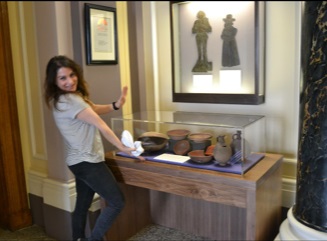 Prior to Covid-19, much of the job was about getting out and about – meeting people from heritage organisations to find out what current issues and opportunities they face, and finding ways to support the areas of their work that align with our own priorities.
Prior to Covid-19, much of the job was about getting out and about – meeting people from heritage organisations to find out what current issues and opportunities they face, and finding ways to support the areas of their work that align with our own priorities.
At the heart of the role is partnership, and that relies on building open and trusted relationships with people. Cultural heritage makes a huge contribution to the South Downs, both by having contributed to why this landscape looks the way it does, to people’s experiences of it as visitors and residents.
During lockdown, I have been ‘getting out and about’ thanks to video calls, which has in some ways been a great way to get to know people better – mainly by getting to meet screen-bombing pets and charting everyone’s lockdown hair growth!
More and more, we have evidence that demonstrates just how meaningful creativity and culture is to us – during the Covid-19 pandemic, there was a huge demand for arts and culture online, and we know that cultural heritage has a role to play in supporting health and wellbeing, as well as supporting a prosperous local economy.
What’s exciting for me on a ‘typical day’ is always about speaking to people and organisations with talent and ideas – from colleagues, to archaeological specialists, to artists and creatives – about ways we can preserve, understand and get people excited about heritage and the arts.
What is the best thing about a career in heritage?
No day is ever the same. Seriously.
Also, one unexpected positive is that I am great on a quiz team – I have learned so much random stuff over the years, from the development of the fusee in clocks to injury patterns sustained by medieval lepers.
What do you think helped you to bag this position?
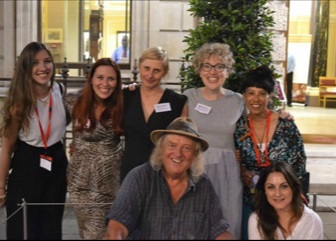 I had a really varied career in the museums and galleries sector before joining the Park, with a focus on caring for collections – the objects held by museums and galleries which tell stories about people over time.
I had a really varied career in the museums and galleries sector before joining the Park, with a focus on caring for collections – the objects held by museums and galleries which tell stories about people over time.
I started as a gallery attendant in a museum and worked my way up, eventually managing historic collections. I focused on developing my skills and took a secondment with Berkshire Archaeology. I had the privilege of managing the archaeology collections from Chichester District, which included finds from really significant sites such as the Roman cemetery at St. Pancras in Chichester to the vast finds from its Roman Cattlemarket. I then went on to manage the collections of the Society of Antiquaries of London, which was an absolute joy. I not only got to work closely with really significant archaeology, art and archive collections – from the earliest surviving portrait of Richard III to a New Year’s gift roll of Elizabeth I (someone gave her a pot of marmalade…) – it was also here that I also got to work within a historic library, so had opportunities to learn from specialists in manuscripts to early printed books.
I moved into a role for the Science Museum Group, working across five national museums in London, Manchester, York, Shildon and Bradford managing collections projects, before then managing the South East Museum Development programme, providing strategic support to the museum and galleries sector across governance, collections and audiences.
I think what helped me to bag the role at the Park is that, over time, I have learned a lot across a number of the sectors that fall under the banner of ‘cultural heritage’ – I’m not an expert in everything, but I know enough to understand the issues and recognise who to speak to, and that’s often at the core of a strategic role – to have the ability to make connections and identify opportunities, and set a direction of travel.
Tell us something we might not know about your area of work?
 It’s been so varied – when the National Railway Museum in York wanted to plan for a major development, myself and colleagues worked to plan the relocation of over 50 historic railway locomotives. Sounds easy right? Just get them on a railway line and off they chug – WRONG! I learned way more about historic railway locomotives than I ever thought I needed to!
It’s been so varied – when the National Railway Museum in York wanted to plan for a major development, myself and colleagues worked to plan the relocation of over 50 historic railway locomotives. Sounds easy right? Just get them on a railway line and off they chug – WRONG! I learned way more about historic railway locomotives than I ever thought I needed to!
I’ve also had the privilege of meeting and supporting some leading specialists with access to collections and information, from Professor Turi King who carried out the DNA analysis on the remains of Richard III discovered in Leicester, to the wonderful Garrard Cole who identified a 6th century case of syphilis in the remains of a young man who had been laid to rest at the Anglo-Saxon cemetery at Apple Down in Sussex.
The role with the National Park has taken my background based on objects and their stories, and totally changed my perspectives – I now have a far greater understanding and sensitivity to the role of place and landscape in shaping people, and its been a reminder that objects people create and use reflect things far beyond the thing itself, such as identity and place.
Over time, the South Downs has provided people with not only resources and raw materials but an inspirational space, that by its very nature makes you think differently about your place in the world.
Weirdest/Best/Most challenging day at work?
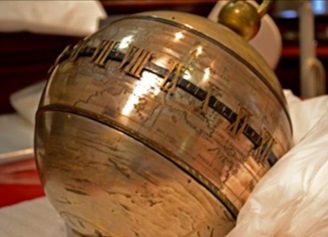 There have been way too many good days in my career journey so far – from restaging a play from 1707 called ‘The Nabob’ to the public at Burlington House in Piccadilly, to working with the biggest collection of medieval panel paintings outside the National Portrait Gallery.
There have been way too many good days in my career journey so far – from restaging a play from 1707 called ‘The Nabob’ to the public at Burlington House in Piccadilly, to working with the biggest collection of medieval panel paintings outside the National Portrait Gallery.
One of the most unusual days was having a visitor pop into a museum I was working at in Sussex with a large ‘Bag for Life’. Inside was a heavily eroded Roman stone portrait. I studied Roman sculpture at university and seeing this literally made my heart stop – but you get this natural caution too (“can this really be what I think it is??”) and you are also careful not to get people’s hopes up. It was amazing to have it confirmed as a 3rd century AD Roman portrait, possibly depicting the emperor Gallienus.
One of the most challenging days was planning how to move a portrait of Queen Mary I by the artist Anthonis Mor (dated to 1554) from Piccadilly to Charing Cross. Its less than 4 miles, but paintings of this kind – painted on oak boards – are liable to be very temperamental. Wood responds to moisture, so any changes in humidity risks the panels expanding and contracting, which then leads to the (very static and uncooperative) paint on the surface flaking and cracking. Even with the most well planned moves for historic objects, you’re never quite able to feel calm until its unpacked, thoroughly checked and back on a wall. Mary’s move to the NPG probably cost me my first grey hairs.
One of the weirdest days was when I worked in a museum that was launching an exhibition on Bhangra music. We had loads of fantastic objects from India on loan and centre stage was an amazing wooden drum. However, after we installed it at the end of day one, and arrived the next day to finish the last bits to the displays before opening, we noticed that the drum had a large hole in it, a pile of dust on the base of the case and a very perplexed looking beetle, around 2 inches long, exploring its new surroundings. A sleeping larvae had clearly liked the warmer temperatures under the exhibition lighting and made an appearance. We packed him off to the Natural History Museum where he was promptly identified but as a non-native species, sadly ended up joining their reference collections.
How can I start a career in the heritage sector?
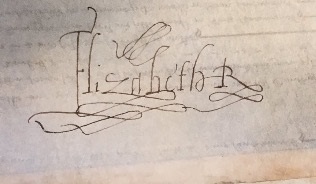 The sector has its roots in systems that have traditionally created huge barriers to participation – demands for university education and years of experience just to get your first job.
The sector has its roots in systems that have traditionally created huge barriers to participation – demands for university education and years of experience just to get your first job.
But in the past 10 years there has been a movement that has pushed for change, and some great opportunities have emerged to ensure we get a range talent and have workforce made up of diverse voices. We’re not quite there yet as a sector, but it’s a start in ensuring more people have opportunities to develop a career in heritage.
There are now traineeships available that support a career journey into the sector without the need for a university qualification. Examples include Museum Futures, and there are also internships offered by museums and historic environment apprenticeships out there.
You might also consider volunteering on a heritage project – there are opportunities out there from supporting your local museum to taking part in a community archaeological dig.
Finding ways to see what you think about the sector is always helpful in deciding if it’s the right role for you. Always make sure the organisation has a good volunteer policy in place, and ask them about the support they will provide you, before agreeing to volunteer.
Do you have any tips for young people looking for a similar job in the future?
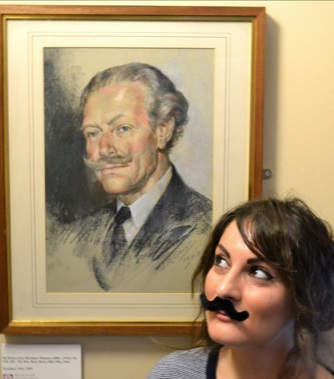 Social media has been a game changer when it comes to considering careers. For the heritage sector, there are many ways you can use platforms such as Twitter to learn more about the heritage sector and ask questions of people working in it.
Social media has been a game changer when it comes to considering careers. For the heritage sector, there are many ways you can use platforms such as Twitter to learn more about the heritage sector and ask questions of people working in it.
One example is #MuseumHour, which runs at 8pm every Monday evening (and if archives float your boat there is also #ArchivesHour that runs on the last Thursday of every month from 8pm-9pm). It debates and explore different themes each week and can be a good way to learn about the challenges and opportunities the sector is facing, while getting to know people from a variety of roles.
Never be afraid to ask people questions about their careers – one of the massive positives about the cultural heritage sector is its willingness to share, and the support available within it.
Also, never forget that a career in heritage isn’t just about loving history. There are so many skills the sector needs – digital and technological skills, project management, interpersonal and communication skills, marketing and communications – its more than just knowing about 1066 and all that…
